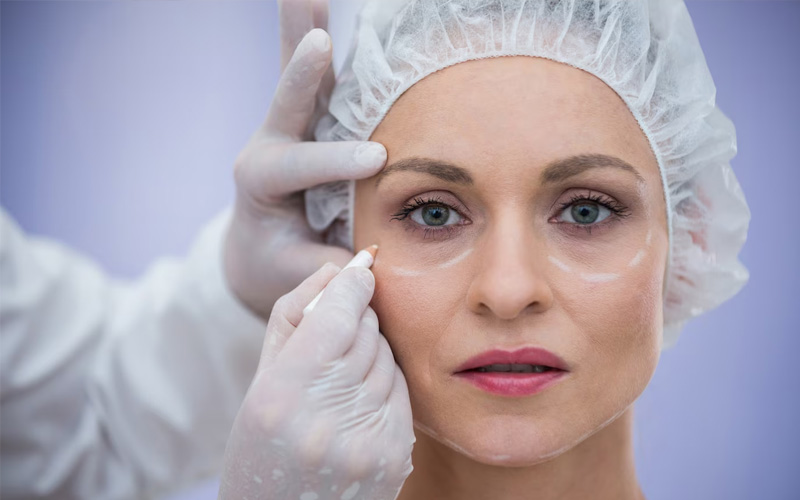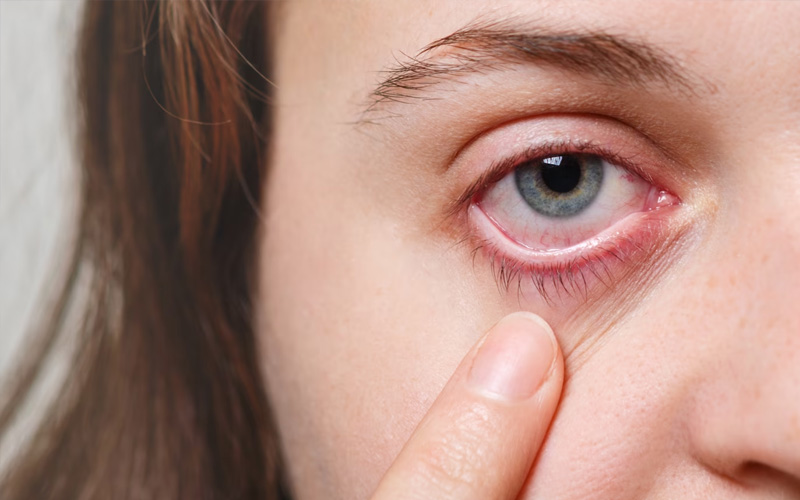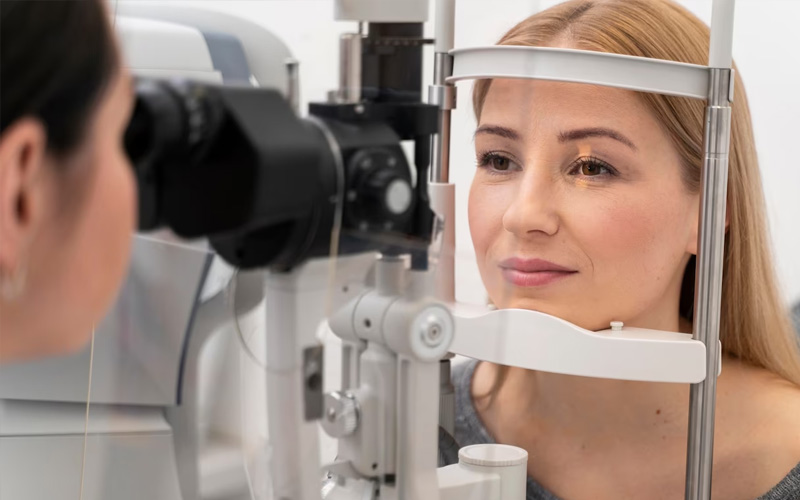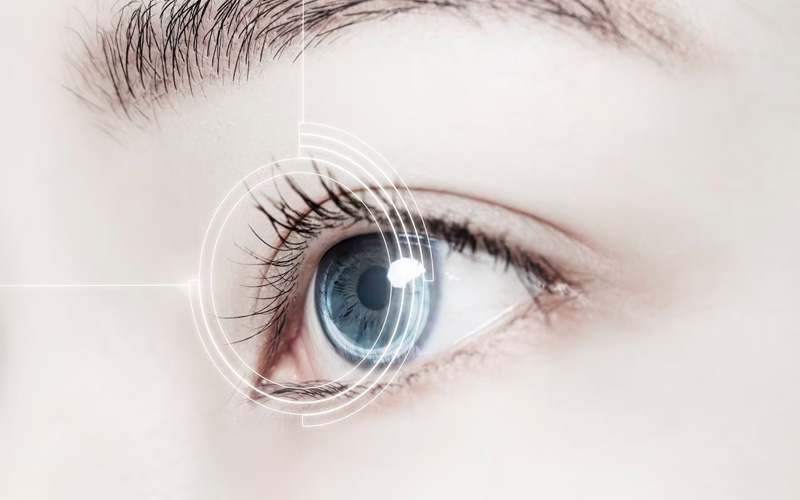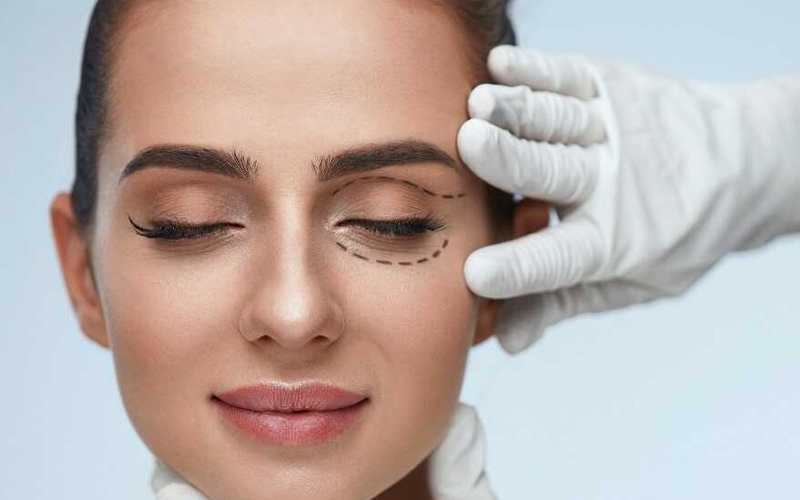Under-Eye Bags
Tired and sleepless eyes, swollen under-eyes, and sagging, baggy eyelids are undoubtedly a nightmare for everyone.
One of the main concerns we address in oculoplastic surgery is under-eye bags. These bags can appear in some people from a very early age due to facial structure or genetic predisposition. In others, they emerge as sagging, puffiness, and looseness under the eyes as a result of aging, time, and gravity, particularly in later years.
Under-eye bags can make individuals look tired, worn-out, sleep-deprived, unhappy, and older than they are, often affecting their psychological well-being and leading to real dissatisfaction.
Those under eye bags can be removed or repositioned with oculoplastic surgical interventions. The operations are usually done under local anesthesia and sedation, mostly from inside the lower eyelids which prevents any type of incision and scarring on the skin. Sometimes the procedure can be combined with midface lifting techniques through the same incisions.
The under-eye bags are essentially small fat pockets around the eyes. These can be likened to cushions that provide insulation and protection within the bony structure where the eyes are housed. For various reasons, these fat pockets may shift, swell, or accumulate fluid, leading to a herniated and sagging appearance under the eyes. This physical issue is best resolved through surgical intervention, which involves repositioning the herniated and displaced fat pockets to restore the area’s natural contour.
The procedure is typically performed under local anesthesia and in a clinical setting. Depending on the facial structure, it can be done using an open approach (via a skin incision) or a closed approach (without an external incision, through the inner surface of the eyelid). In cases where additional procedures are deemed necessary, such as SOOF lift, midface lift, or brow and temporal lifts, general anesthesia may be preferred.
Regardless of the method used, the eyes are not covered postoperatively, and hospitalization is generally not required. Patients usually experience no significant pain after surgery; however, swelling and fluid accumulation may occur in the surrounding eye tissues, eyelids, or even the conjunctiva (the tissue covering the eye). Applying ice packs, using topical eye drops, and resting during the first few days are crucial for recovery. During this period, some sensitivity in eye movements or blurry vision may also occur.
Typically, swelling and sensitivity around the eyes start to subside within 7–10 days, and any stitches, if used, are removed. With the right procedure performed on suitable candidates by skilled hands, successful and lasting results can be achieved.
Closed surgeries performed through the inner surface of the eyelid have recently become one of the most satisfying procedures, especially for patients with firm facial structures and relatively younger ages. This method is particularly advantageous for addressing under-eye bags, which can appear even in very young patients due to facial structure and genetics, giving the face a tired, sleepless, or aged appearance. The scarless, closed technique provides an effective and convenient solution for these concerns.
The procedure can be performed under local or general anesthesia, with patients discharged the same day as their eyes are not covered post-surgery. While there is generally no significant pain afterward, patients may experience mild stinging, a foreign body sensation when opening or closing their eyes, or sensitivity during eye movements. Applying ice packs, using topical eye drops, and resting during the first few days are recommended for recovery. Swelling usually subsides, and tissues begin to heal within about 10 days.
As no skin incision is made, there is no risk of visible surgical scarring. Most patients can return to their normal daily activities around the 15th day post-surgery. However, as with all facial and periocular procedures, the final results may take 6–8 months or even up to 12 months to fully manifest. To achieve optimal outcomes, this surgery can occasionally be combined with treatments such as laser therapy, mesotherapy, or radiofrequency applications for the periocular area.
In summary, closed under-eye bag surgery, which involves no skin incision, is a highly successful and long lasting method, especially for patients with firm skin structure or younger age groups.
Performed in such a delicate area as the under-eyes, this technique ensures the best and most permanent results when carried out by an experienced oculoplastic surgeon specializing in the lower eyelids and surrounding structures.
Although there are many creams, solutions, and other products on the market claiming to resolve under-eye bag issues, none of them are truly effective. Similarly, under-eye fillers, which have become popular in recent years, fall far short of being a solution to this problem. In fact, we have increasingly observed that the complications caused by these fillers under the eyes and on the face outweigh their purported benefits.
Regardless of age, race, or gender, the best course of action for patients experiencing under-eye bag issues is to consult with an oculoplastic surgeon who specializes in the delicate tissues around the eyes. Only such an expert can provide a safe and effective solution for these concerns.
Fillers have become one of the most frequently performed facial treatments in recent years. Particularly in the last 8–10 years, they have been widely used for the under-eye area. Given that the eyes are the most prominent structures of the face and that the surrounding area significantly contributes to their appearance, nearly every procedure related to this region quickly garners interest and sees widespread application.
The primary goal of filler treatments is to fill areas that have lost volume over time, preventing hollowing and preserving a youthful appearance. Under-eye bags and hollows are among the first noticeable areas on the face, leading many people, even at a young age, to seek solutions for these deformities. Every year, hundreds of thousands of doses of under-eye fillers are administered globally to address under-eye puffiness, dark circles, and hollows.
While relatively satisfactory results can be achieved in the right patients, issues arising from long-term use have started to shift perspectives on under-eye fillers. One of the fundamental challenges of fillers in the under-eye area is the anatomy of this region, which consists of the thinnest skin on the body and a dense network of critical anatomical structures beneath it. The hollowed and dark appearance that drives patients to seek fillers is often caused by the loosening of structures in the under-eye and mid-face transition area, downward displacement of the connections between the cheeks and under-eye region due to gravity and time, and herniation of under-eye fat pockets.
Although the idea of resolving this appearance with fillers in an office setting seems appealing, the complexity of the underlying mechanisms and the involvement of multiple components often make it less straightforward than anticipated. Addressing these issues with targeted solutions yields more effective and long-lasting results.
Compared to fillers in other areas of the face, fillers used under the eyes are metabolized more slowly over time. This is partly due to the immobile nature of this region and the lack of sufficient body-produced enzymes to break down the filler. As the structure of the face and under-eyes changes over the years, many patients find that the filler remains unabsorbed, resulting in a progressively worse appearance. The body’s reaction can lead to increased discoloration and swelling, with the filler potentially migrating to adjacent areas of the face, such as the mid-face and cheeks.
In conclusion, under-eye fillers intended to address puffiness, hollows, and dark circles often cause more problems for many patients over time.
When considering treatments for such a delicate and prominent area of the face, working with an experienced physician who is well-versed in facial and ocular anatomy and physiology is crucial. This minimizes the risk of unfavorable outcomes and the need for additional corrective interventions.
Patients with under-eye bags may also experience dark circles and discoloration in the under-eye area. Factors such as the patient’s skin type, genetic predisposition, and familial traits can contribute to these issues. Additionally, certain systemic conditions may lead to discoloration and darkening under the eyes.
Although many cosmetic and medical products claim to resolve under-eye dark circles and discoloration, unfortunately, an ideal treatment method has not yet been developed for this problem. In some cases, surgical procedures planned for under-eye bags may also improve the appearance of dark circles and discoloration. However, it is important to note that such surgeries may not completely eliminate these issues.
In selected patients, combining surgical interventions with non-surgical dermocosmetic treatments, such as laser therapy or mesotherapy, may enhance the outcomes for treating under-eye bags and dark circles.
Given the sensitivity and importance of the under-eye area, especially when dealing with concerns like dark circles and discoloration, consulting an experienced oculoplastic surgeon before starting any treatment significantly increases the likelihood of achieving the best possible solution.




